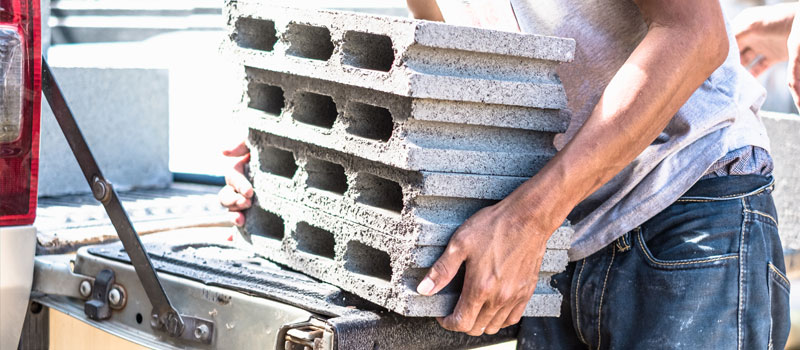What is a Hernia?
Presenting as a lump or bulge under the skin, a hernia occurs when an organ pushes through a weakened muscle wall.
The most common types of hernias are in the abdomen but they can also appear in the upper thigh, belly button, and groin areas. While hernias are not life-threatening, they do not resolve on their own and can require hernia surgery to prevent potentially dangerous complications.
When Does a Hernia Form?
Hernias can be present at birth or acquired later in life.
Congenital Hernia
These are hernias that are present at birth. They occur when the abdominal wall does not fully close while the baby is developing in the womb. The hernia may be visible at birth or manifest later in life. In children, congenital hernias typically show as bulges in the abdomen or groin that enlarge during crying, coughing, or straining during bowel movements.
Acquired Hernia
These are hernias that one develops over time, often due to a combination of muscle weakness and straining. The weakness can result from age-related wear and tear. Straining can be a result of activities like heavy lifting, constipation, persistent coughing, or difficulty urinating. Lifestyle factors such as obesity, pregnancy, smoking, and poor nutrition can also contribute to the development of acquired hernias.
Once a hernia forms, it will not resolve by itself. Should you notice an unusual bulge in your abdomen or groin area, visit a hernia surgeon in Singapore immediately.
What Are the Different Types of Hernia?
The most common hernias are located on the groin, upper inner thigh, navel and abdomen. A hernia can also occur at an old surgical site where abdominal tissue protrudes from the abdominal wall.
Reducible Hernia
Reducible hernias refer to hernias that occur intermittently. They can cause discomfort or pain when they protrude through the abdominal wall, but they can often be pushed back or reduced. If left untreated, these hernias can worsen over time, leading to increased pain and potential complications.
Inguinal Hernia
is the most common type of hernia and occurs when a section of the intestine or fatty tissue protrudes through a weakened area in the lower abdominal wall, commonly in the inguinal canal located in the groin regionUmbilical Hernia
occurs when a part of the intestine or fatty tissue bulges through the abdominal wall near the belly button. Umbilical hernias are common in newborns but can also occur in adults.Epigastric Hernia
occurs when part of the intestines pushes through the abdominal muscles between the belly button and sternum (breastbone). Although epigastric hernias are present from birth, the bulge may not be visible until the child is older.Incisional Hernia
occurs when tissue pushes through a surgical wound in the abdomen that has not fully healed. They are most common after abdominal surgeryHiatal Hernia
occurs when the upper portion of the stomach protrudes through a gap between your oesophagus and diaphragm. It often develops in people who are over 50 years old.
Non-reducible Hernia
This occurs when the herniated contents are unable to return to the cavity, which may lead to the blood supply to the affected tissues being clamped and cut off by surrounding muscles. This may result in obstruction or gangrene of the herniated tissue and sometimes even rupture of the bowel. Non-reducible hernias are often very painful and require prompt medical attention.
Incarcerated Hernia:
This type of hernia occurs when a portion of tissue, such as part of the intestine or fat, becomes trapped in the abdominal wall. This can lead to a blockage of the bowel. An incarcerated hernia can become strangulated, which is a medical emergency requiring prompt hernia surgery.Strangulated Hernia:
A strangulated hernia is an advanced and serious form of an incarcerated hernia. In this case, the trapped tissue has its blood supply cut off, which can cause the tissue to die or become gangrenous. This condition is life-threatening and requires immediate medical attention.
What Are the Signs and Symptoms of a Hernia?
Hernias can manifest in various ways, and their symptoms can range from barely noticeable to severe, depending on the size of the hernia and where it is located.
A noticeable bulge or lump in the affected area is the most common sign of a hernia. This bulge may become more prominent when you cough, strain, or stand up and might disappear when you lie down.
Some people might also experience pain or discomfort in the herniated area. The pain may be sharp and immediate or a dull ache that worsens towards the end of the day.
If you suspect or know that you have a hernia, seek prompt medical advice from our surgeon.
Contact UsWhat Are the Risk Factors of a Hernia?
- Lifting heavy objects with improper techniques
- Chronic constipation and straining
- Prolonged coughing and sneezing
- Weak abdominal muscles
- Obesity
Can Hernias Go Away on Their Own?
Hernias generally do not heal on their own. While some hernias, especially umbilical hernias in infants, may appear to reduce in size or "disappear," the underlying defect in the tissue or muscle still exists. Over time, the hernia might reappear or potentially lead to complications like severe pain and intestinal obstruction. As such, it is essential to consult with a hernia surgeon for evaluation and guidance on appropriate treatment.
Ready to discuss treatment options for your hernia? Contact our hernia clinic at 6235 4088 to schedule a consultation

How Can You Lower Your Chances of Getting a Hernia?
Hernias can form as a result of repetitive pressure placed on the abdominal muscles caused by arduous work. A high-risk individual may be more likely to develop a hernia if he or she is in a job that involves heavy lifting.
To lower your chances of developing a hernia caused by weakened abdominal muscles, adopt good work safety practices in your physically demanding job.

